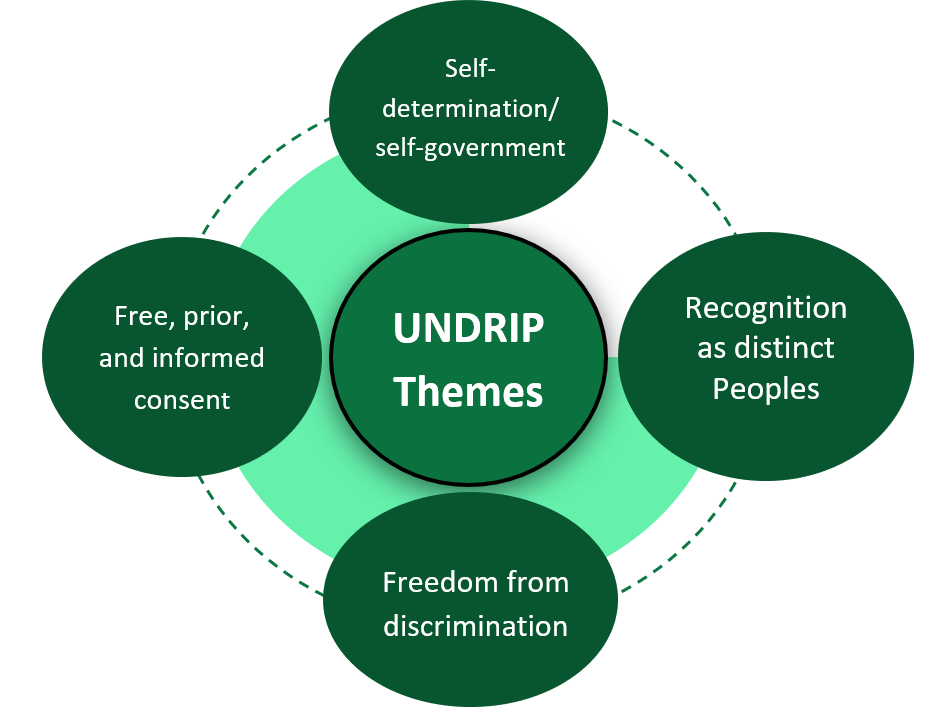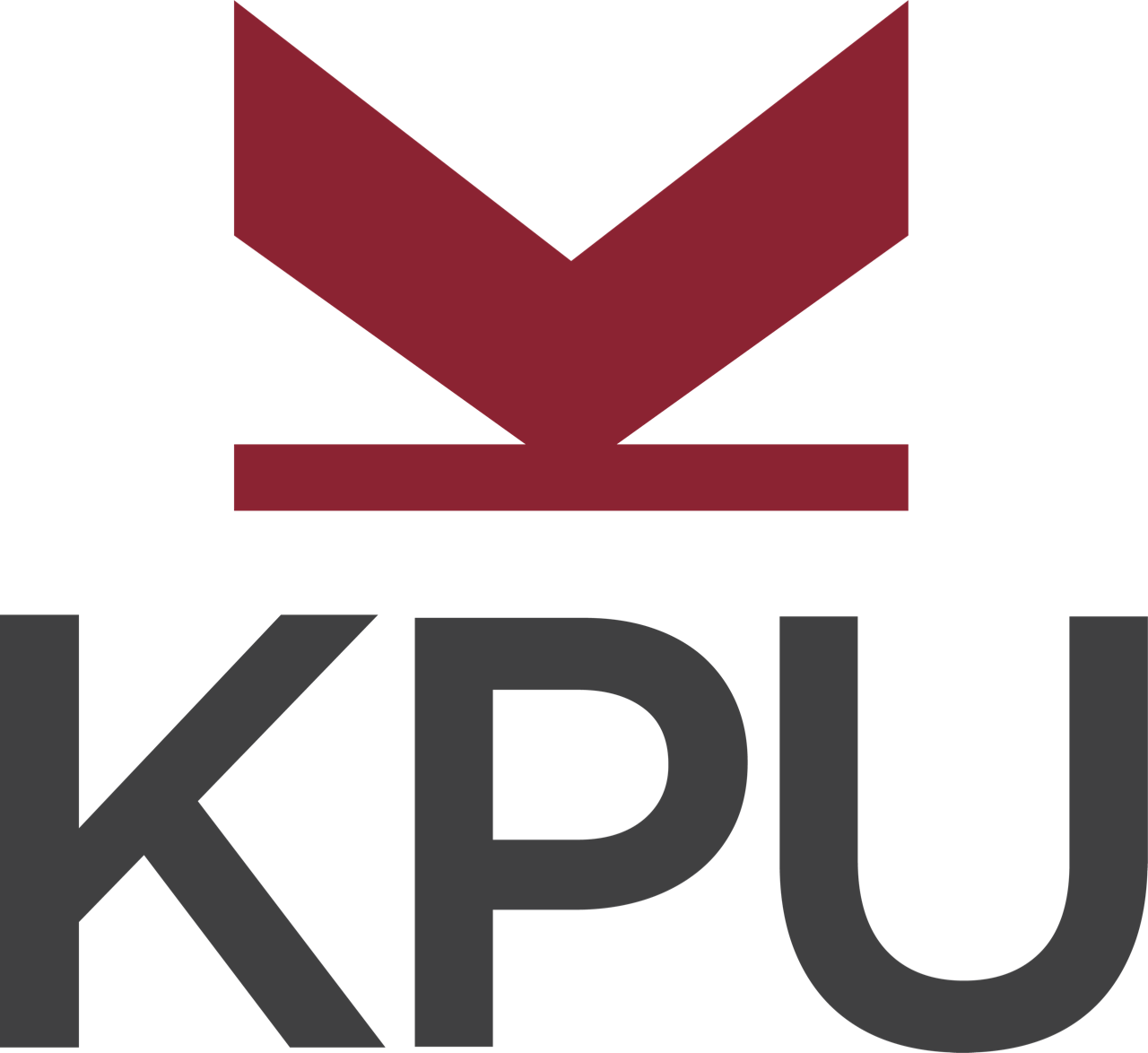14 United Nations Declaration on the Rights of Indigenous Peoples (UNDRIP)
Connie Strayer and Robyn Grebliunas
Learning Objectives
By the time you complete this chapter, you should be able to:
- Describe how UNDRIP provides a framework for global Indigenous rights.
- Explain the content of key UNDRIP articles.
- Discuss Canada’s history of UNDRIP implementation and steps that may be needed to fully honour the rights outlined in UNDRIP
United Nations Declaration on the Rights of Indigenous Peoples (UNDRIP)
Learner Note
It important to note that Canada voted against the declaration at the United Nations when it was first introduced in 2007, but in May 2016, Canada officially adopted UNDRIP. This is important in the understanding of Canada’s colonial past treatment of the First Peoples of Turtle Island (North America),[1] particularly related to land rights.
UNDRIP is an important step in moving Canada’s relationship with Indigenous peoples forward
UNDRIP serves as a crucial framework for reconciliation, healing, and coexistence, promoting cooperative relations based on principles such as justice, democracy, respect for human rights, and non-discrimination. It sets forth minimum standards for the survival, dignity, and well-being of Indigenous communities globally.
Learner notes
UNDRIP consists of 46 articles recognizing the basic human rights of Indigenous Peoples along with their rights to self-determination.
The declaration includes articles affirming the right of Indigenous Peoples to create their own education systems, receive restitution for stolen lands, and participate in all decision-making that affects their interests.
Learner notes
Source and recommended reading: What does ‘implementing UNDRIP’ actually mean? (CBC News)
UNDRIP means the Canadian government will work in consultation and cooperation with Indigenous Peoples to:
-
Take all measures necessary to ensure the laws of Canada are consistent with UNDRIP.
-
Prepare and implement an action plan to achieve the objectives of UNDRIP.
-
Develop annual reports on progress and submit them to Parliament.
Learner notes
Source and recommended reading: UN Declaration on the Rights of Indigenous Peoples (First Nations and Indigenous Studies – UBC)
UNDRIP has been described as an instrument of reconciliation to build a political order based on mutual respect and understanding.
How does UNDRIP impact Indigenous Peoples of Turtle Island (commonly known as North America) today?
Let us discuss a few of the UNDRIP articles to answer that question.
Article 1
“Indigenous peoples have the right to the full enjoyment, as a collective or as individuals, of all human rights and fundamental freedoms as recognized in the Charter of the United Nations, the Universal Declaration of Human Rights and international human rights law.”
—Cited from UN Declaration on the Rights of Indigenous Peoples (ubc.ca)
Article 1 means Indigenous Peoples have the right to the full enjoyment, as a collective or as individuals, of all human rights and fundamental freedoms as recognized in the Charter of the United Nations, the Universal Declaration of Human Rights and international human rights law. UNDRIP provides a framework for reconciliation, healing, and peace.
Learner notes
Source and recommended reading: UN Declaration on the Rights of Indigenous Peoples (ubc.ca)
Article 3
Article 3 of UNDRIP recognizes Indigenous Peoples’ right to self-determination, which includes the right “to freely determine their political status and freely pursue their economic, social and cultural development.”
—Cited from UNDRIP FAQ (nctr.ca)
Article 3 affirms the right of Indigenous Peoples to make their own decisions about their own lives and futures. This right to self-determination is a critical thread throughout the entire Declaration.
Article 4
Article 4 affirms Indigenous Peoples’ right “to autonomy or self-government in matters relating to their internal and local affairs.”
—Cited from UNDRIP FAQ – NCTR
Article 4 affirms the right to self-government on reserve affairs.
Article 5
Article 5 protects their right “to maintain and strengthen their distinct political, legal, economic, social and cultural institutions.”
—Cited from UNDRIP FAQ – NCTR
Article 5 allows Indigenous Peoples to maintain and strengthen their distinct political, legal, economic, social, and cultural institutions, while retaining their right to participate fully, if they so choose, in the political, economic, social, and cultural life of the Canada.
Article 11
“Indigenous peoples have the right to practice and revitalize their cultural traditions and customs. This includes the right to maintain, protect and develop the past, present and future manifestations of their cultures, such as archaeological and historical sites, artefacts, designs, ceremonies, technologies and visual and performing arts and literature.”
—Cited from UNDRIP FAQ – NCTR
Article 11 will be referenced in this course related to curation, creation, and research with Indigenous Peoples. Notice that we said “with” not “on” Indigenous Peoples.
Article 26
Article 26 states that “Indigenous peoples have the right to the lands, territories and resources which they have traditionally owned, occupied or otherwise used or acquired,” and it directs states to give legal recognition to these territories.
—Cited from UNDRIP FAQ – NCTR
Article 31
“Indigenous peoples have the right to maintain, control, protect and develop their cultural heritage, traditional knowledge and traditional cultural expressions, as well as the manifestations of their sciences, technologies and cultures, including human and genetic resources, seeds, medicines, knowledge of the properties of fauna and flora, oral traditions, literatures, designs, sports and traditional games and visual and performing arts. They also have the right to maintain, control, protect and develop their intellectual property over such cultural heritage, traditional knowledge, and traditional cultural expressions.”
—Cited from UNDRIP FAQ – NCTR
Along with Article 11, Article 31 will be referenced in this course numerous times related to curation, creation, and research with Indigenous Peoples. It is hugely important when it comes to the lack of copyright protection offered by the current Canadian copyright laws.
Learner notes
Source and recommended reading: UNDRIP FAQ – NCTR
UNDRIP themes

Connecting the TRC and UNDRIP: What Does This Mean?
As outlined by UNDRIP and TRC, Indigenous Peoples have the right to self-determination in all aspects of their lives, which includes the establishment of research ethics protocols as the community sees fit.
That means nothing about us, without us.
This slogan serves as a powerful reminder that policies and actions affecting Indigenous communities must be co-developed with their active ongoing participation and consent.
Learner notes
The above saying is a centuries-old political slogan asserting that no policy should be created without the full and direct participation of those it affects.
It is referring to “free, prior, and informed consent” as found throughout UNDRIP. The Declaration emphasizes the importance of recognizing and upholding the rights of Indigenous Peoples and ensuring that Indigenous Peoples effectively and meaningfully participate in decisions that affect them, their communities, and their territories. Likewise, any knowledge gathering done with Indigenous Peoples must be done with their full “free, prior and informed consent.” Simply put, nothing about us, without us.
Source and recommended reading: Nothing About Us Without Us (amm-us.org) [PDF] and Beyond Conservation: Working Respectfully with Indigenous People and Their Knowledge Systems – IPCA Knowledge Basket
Active ongoing participation and consent means:
- Consent
- Consultation and collaboration
- Localization
- Giving decision-making power
True consent must be informed, which means that people must be provided the necessary information and given time to consider the requests. Sensitive content, such as secret and sacred material, requires special communication procedures that should be ascertained first. Engagement may take time and the decision makers have the freedom to say no. There may be one or more groups that have custodianship of traditional belongings. Communication with and consent from each identified group should be sought if consensus is required.
Learner notes
Geographical location does not ensure similarities in protocols, language, and ways of being. Indigenous Protocols vary from community to community, and even if the communities are geographically close, there may be significant differences in cultural practices and language. It is important to do the necessary research and gain a base level of understanding about the communities you are approaching.
Meaningfully consulting and collaborating with Indigenous Peoples in the development of digital programs and policies is important. Indigenous communities want to be engaged early and often regarding the sharing of their Indigenous Traditional Knowledges throughout the full process of working together.
Consultation at the hyper-local level will ensure that there is no misinformation being expressed on widely accessible online platforms and that all information published is suitable and approved by the community.
Learner notes
It is critical to engage Indigenous participants at the local level if we are to decolonize the digital. This is the only way to ensure these spaces are used acceptably.
Source and recommended reading: Decolonizing the Digital: How to Bring Indigeneity to Online Spaces | Intercontinental Cry
Giving decision-making power means respectful engagement, shared decision-making, and the recognition of Indigenous agency in shaping their own futures. It means self-determination. The sharing of power is vital.
Learner notes
Canada’s commitment to Indigenous self-determination involves legal recognition, reconciliation efforts, awareness-building, addressing inequities, and collaborative partnerships through shared decision-making. This also includes honouring Indigenous Traditional Knowledges.
Now that you have a baseline knowledge of the guiding documents — TRC and UNDRIP — let’s dive into why data sovereignty is vital to reconciliation.
Attribution Statement
- “UNDRIP Themes” diagram by Connie Strayer and Robyn Grebliunas is licensed under a CC BY 4.0 license.
- Indigenous Digital Literacies Copyright © 2024 by Connie Strayer and Robyn Grebliunas is licensed under a Creative Commons Attribution 4.0 International License, except where otherwise noted.
- The traditional story of Turtle Island will vary among Indigenous communities. For most, there is agreement that the turtle is the symbol of life and earth. Many, but not all, Indigenous communities historically know Turtle Island as what is commonly known as North America today. Source and recommended reading: Turtle Island (The Canadian Encyclopedia) ↵

